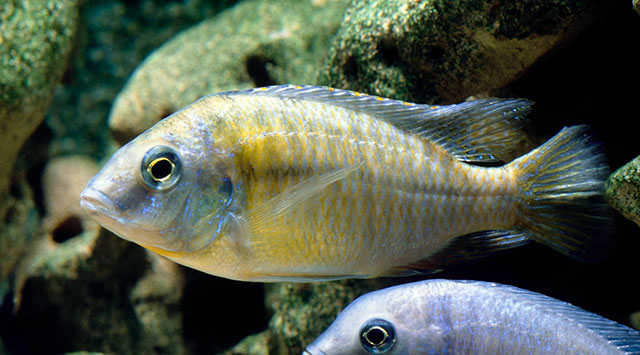| Cichlidae (Cichlids), subfamily: Pseudocrenilabrinae |
| 14 cm TL (male/unsexed) |
|
benthopelagic; freshwater; pH range: 8 - 8; dH range: 9 - 19 |
| Africa: Endemic to the northern end and the southwest arm of Lake Malawi. |
|
Dorsal spines (total): 15-16; Dorsal soft rays (total): 10-11; Anal spines: 3-3; Anal soft rays: 9-10; Vertebrae: 31-31. Distinguished from P. taeniolatus by the more strongly marked pattern of longitudinal and vertical black stripes and in having fewer and larger teeth in the outer row of the upper jaw and on the lower pharyngeal bone, in having more fleshy lips which partly obscure the posterior teeth of the upper jaw, and in having fewer gill rakers, with the anterior ones very low and blunt. Differs from P. virgatus in not having the posterior teeth of the two inner rows of the lower pharyngeal enlarged. |
| Inhabits rocky shores and adjacent sandy areas. Characteristic of areas where the rocks are covered with a sediment layer. Feeds by blowing sediment off the rocks and picking at food items remaining (Ref. 267). |
|
Least Concern (LC); Date assessed: 20 June 2018 Ref. (130435)
|
| harmless |
Source and more info: www.fishbase.org. For personal, classroom, and other internal use only. Not for publication.

